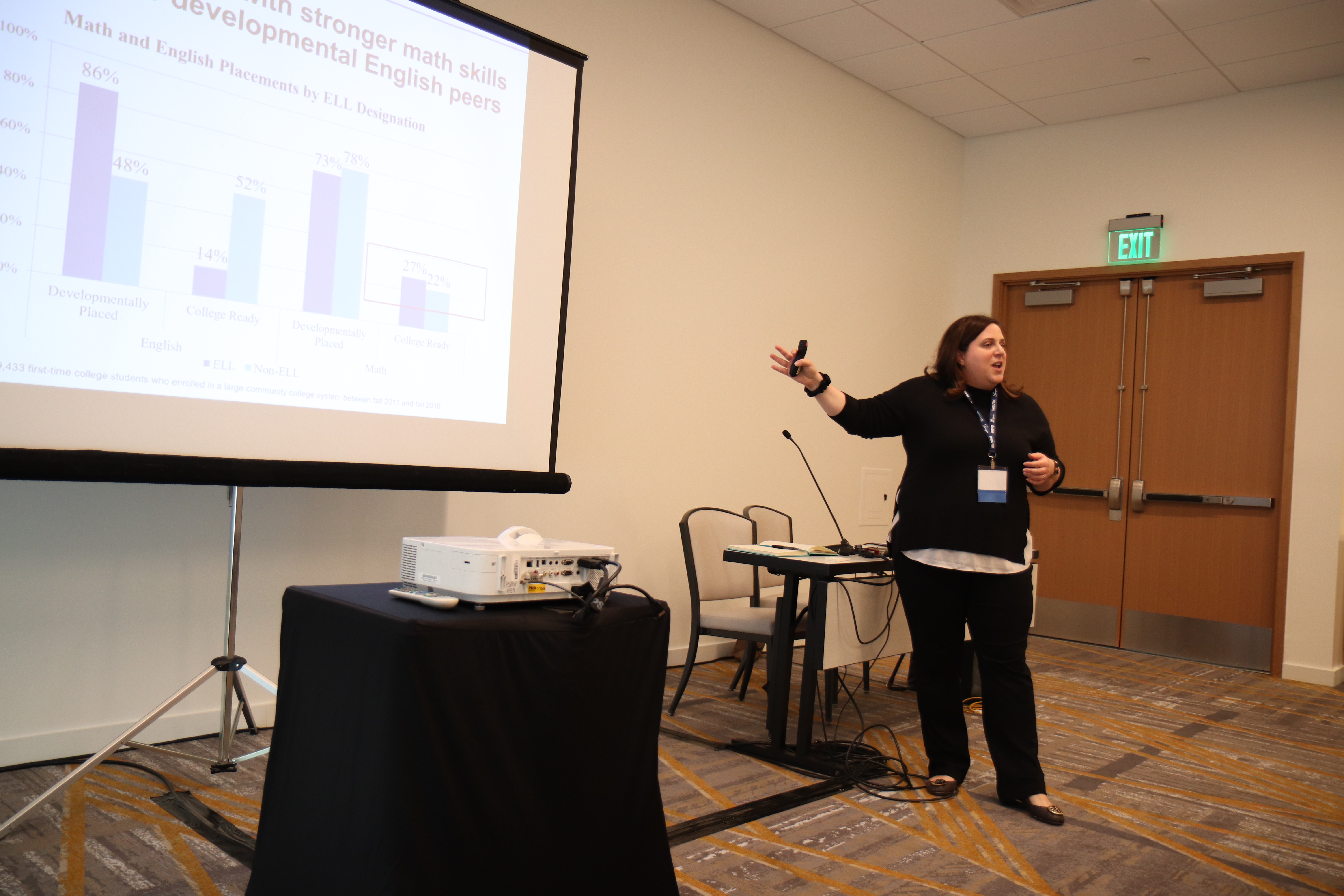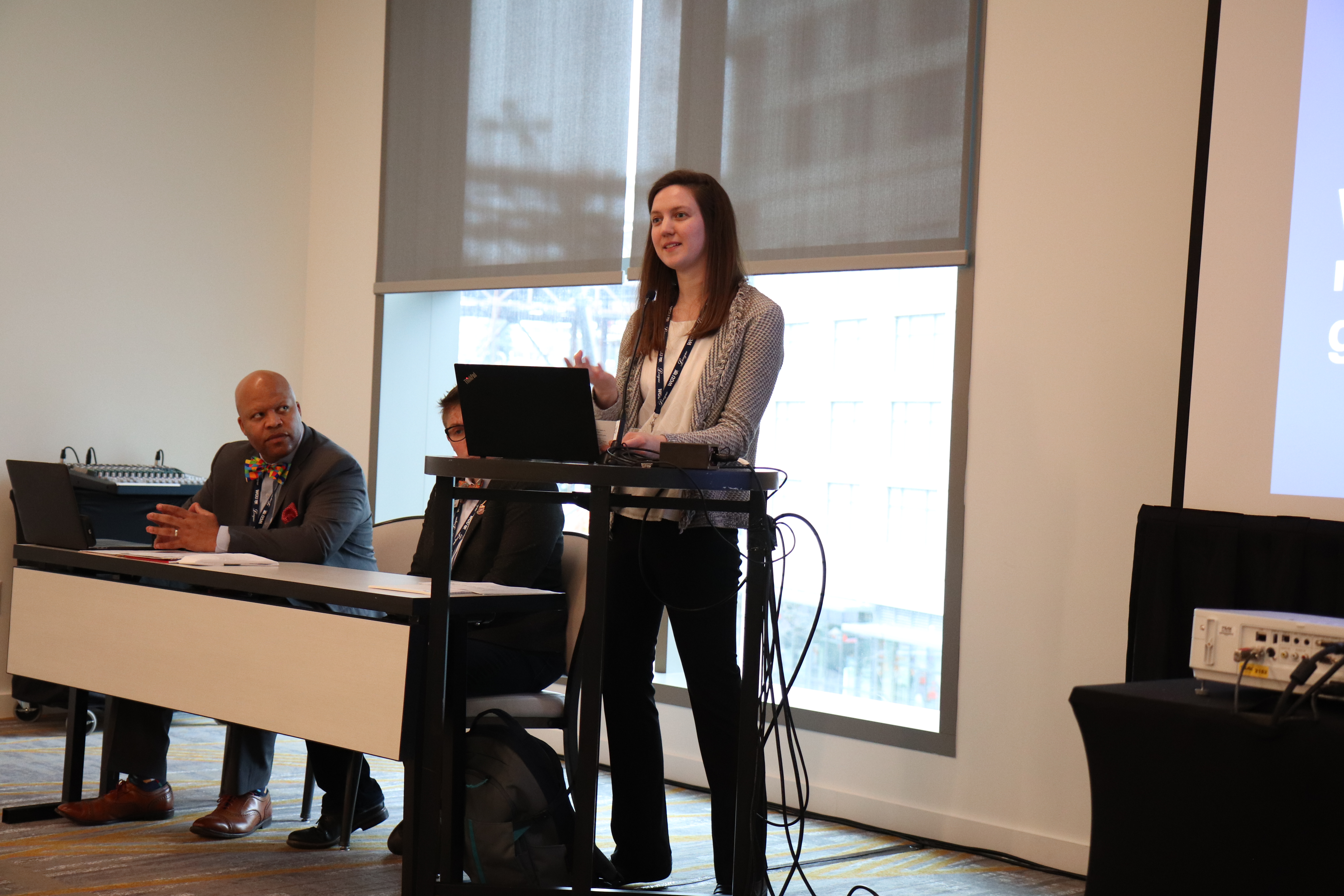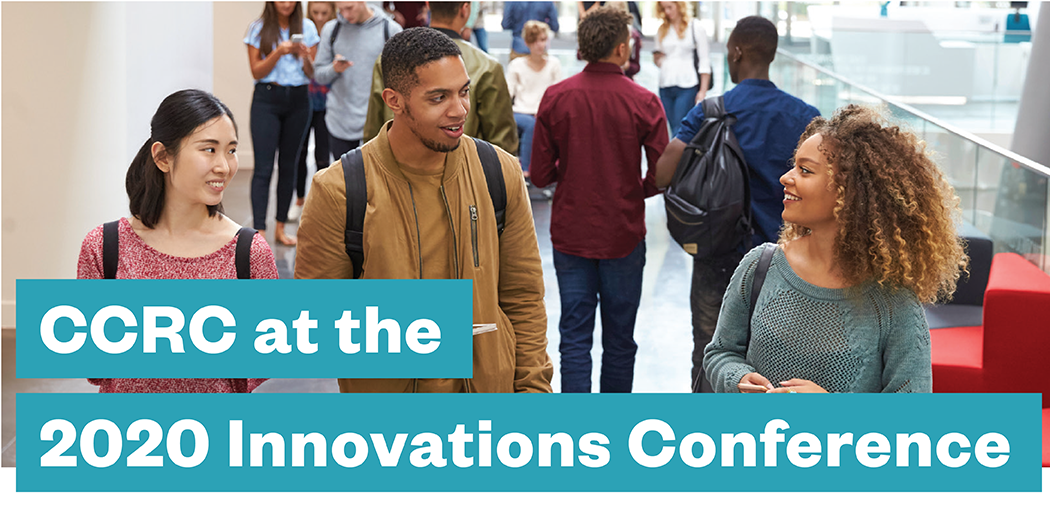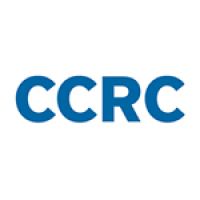By Hayley Glatter and Elizabeth Ganga
Several CCRC researchers presented at the League for Innovation in the Community College conference in Seattle in early March. This blog post summarizes each session and has links to related reading. Scroll down to the bottom for the full list of presentations and links to the presentation slides, which will be posted as they become available.
Implementing Advising Reform: Lessons Learned From Research and Practice
Tuesday, 2:15 p.m.
Advising reform is not about the technology. It’s all about freeing up advisors for more human interaction with students, said Brad Mazdra of Doña Ana Community College in his League presentation with CCRC Senior Research Associate Hoori Santikian Kalamkarian.
But getting to that point is hard work. Technology implementation can fail. Siloed college departments can hamper communication. Old habits can be hard to break.
“You know how higher ed works,” Mazdra said. “You have to make partnerships even within your own institution.”

Hoori Santikian Kalamkarian
But CCRC has researched technology-mediated advising since 2012 and has learned some of the key ways to make advising reform more successful. It’s important to bring faculty into the process early so they can participate in the design of the reform, not just implementation. Also, effective reform requires committed leadership and the participation of people in many types of roles from many departments. In addition, advisors need to be open to changing their responsibilities. But perhaps most important is the recognition that technology is not a substitute for people.
“Technology-mediated advising is not about removing the role of the advisor,” Kalamkarian said. It’s a perspective that says advising technology can support holistic, long-term relationships between students and advisors.
Further reading: iPASS in Practice: Four Case Studies
Rethinking Dual Enrollment as an On-ramp to a Community College Transfer Pathway
Tuesday, 2:15 p.m.
Despite the decline in community college enrollment overall, the number of students enrolled in dual enrollment programs has skyrocketed in recent years.
These students take courses for college credit prior to graduating from high school, and there is data that indicates they have strong postsecondary outcomes, though equity gaps persist among participants. In a session on Tuesday, CCRC Senior Research Associate John Fink contextualized dual enrollment and transfer data, explaining that many dual enrollment programs are done in a scattershot way, which makes it tough for students to apply the credits they take toward a bachelor’s degree.
However, there are places that buck the trend. Lorain County Community College (LCCC) in Ohio, for instance, has clearly outlined pathways and full degree maps for students starting in seventh grade. Through the College Credit Plus program, seventh- through 12-graders in the Buckeye State can take up to 30 hours of college coursework for free every year, as mandated by the state. Nadia Leary, who works with dual enrollment students at Lorain, said that the program has a high participation rate, and 43% of Lorain County seniors graduate from high school having already earned credits from LCCC. Participating students also have stronger academic outcomes than their non–College Credit Plus counterparts.
Further reading:
The Transfer Playbook: Essential Practices for Two- and Four-Year Colleges
Unpacking Program Enrollments With Equity in Mind: Insights and Tools
Tuesday, 1 p.m.
Similar to the students in their classrooms, the programs offered by community colleges are incredibly diverse. However, as CCRC Senior Research Associate John Fink explained during a League for Innovation session on Tuesday afternoon, not all of these programs have the same value to students, and the type of credential students pursue can have a large impact on their post-education trajectory.
“Community colleges have such a wide range of pathways for students, from short-term credentials … all the way to transfer and bachelor’s degrees,” Fink said. “There’s a wide array of options, which is wonderful, … but that also means there’s a lot of opportunity for inequity and stratification.”
With a focus on entry programs, CCRC researchers disaggregated data to help to understand why students from certain backgrounds are more likely to enroll in specific community college pathways. Not only did researchers chart the racial and gender composition of various programs, but they also quantified the value of those programs. These efforts dovetail with guided pathways efforts at colleges such as Lorain County Community College, where Fink’s co-presenter Thomas Benjamin is the director of institutional research. Benjamin said the campus community has embraced equity by design and has prioritized data disaggregation for nearly a decade.
Fink also emphasized that this work is still very much in progress, but a modified version of the program enrollment composition tool is available. And though there are more questions than answers right now, colleges can still get started closing equity gaps.
“These are meant to be tools to raise discussions,” Fink said. “It’s really about raising these questions and getting folks to gather together and interrogate what’s really going on there.”
Exploring Characteristics and Outcomes of English Learners in Community Colleges
Tuesday, 11:45 a.m.
CCRC has been exploring issues around English language learners in community colleges for the past two years, but there’s still a lot to learn about students who need support to do college-level work in English.
A major challenge is that colleges don’t systematically identify English learners. Most of the studies done to date focus on students enrolled in ESL courses, and as a result, they leave out large numbers of English learners, CCRC’s Hoori Santikian Kalamkarian said.
“We don’t know a whole lot about that bigger bucket of the English learner population,” she said.
Through a literature review, case studies at two California colleges, and an analysis of data from a large college system, we’ve learned that the English learner population is complex. Many students have immigrated to the United States from around the world, but others are the children of immigrants who don’t speak English at home. In the two California colleges, 70% of students surveyed had studied English in their countries of origin and many had earned college degrees.
Colleges often have many levels of ESL courses, but some are reforming their courses to move students into college-level English more quickly—for instance, by integrating ESL reading and writing. Some colleges and states are also changing how English learners are assessed, so more are placed directly into college-level English. But most colleges still use a single test to place students, and often there’s no formal way to identify which students should take the test, Kalamkarian said.
“We find the single instrument to be really, really problematic,” she said.
Further reading: English Learners and ESL Programs in the Community College: A Review of the Literature
Institutional Transformation Through Guided Pathways at Rural Community Colleges
Monday, 1 p.m.
Community colleges are the primary higher education institutions in rural areas, making up well over half of rural colleges and serving more than one million students. But CCRC has not focused on the specific needs of these colleges, even as our researchers have investigated how colleges across the country are implementing guided pathways to improve student success.
This session gave CCRC researchers a chance to focus on rural colleges’ particular challenges, and it drew personnel from rural colleges around the country to talk about their experiences with reform.
“We’d like to learn more about what supports are needed for these colleges,” CCRC Research Associate Amy Brown told the group. Brown presented with Leslie Hammond of Linn-Benton Community College in Oregon and Michael Torrence of Motlow State Community College in Tennessee.

Amy Brown
While rural colleges have many of the same challenges as other colleges implementing pathways, they have some distinct issues. Some are in economically depressed parts of their states, some have seen a steep dropoff in their high school population, and many struggle with a lack of broadband internet. One audience member at the session talked about how hard it is for her college to attract adjunct faculty.
Send us your thoughts on what research would benefit rural colleges by tagging us on Twitter at @CommunityCCRC.
Further reading:
Redesigning Your Community College for Student Success: Lessons From Colleges Leading Whole-College Guided Pathways Reforms
Monday, 11:45 a.m.
Guided pathways research is entering its next phase, CCRC Senior Research Associate Hana Lahr told conference attendees on Monday. The field is transitioning from learning about the guided pathways model to learning how to undertake the whole-college reform it entails.
“We’re moving from the ‘what’ of guided pathways to the ‘how,’” Lahr said.
In a well-attended session, Lahr, along with CCRC Research Associate Sarah Griffin, described the broad goals of guided pathways and activities designed to achieve those goals. The institutional redesign process aims to advance three main ends, Griffin said: social and economic mobility, workforce development in the community, and equity. CCRC has identified several activities colleges should undertake to achieve them, including connecting all programs to good jobs or further education and helping students explore their career and academic interests.
But institutionalizing and scaling these practices takes more than a little bit of elbow grease. CCRC’s recent guided pathways work has centered on several phases of development that colleges typically move through when undertaking a whole-college redesign. These phases can span the lengthy timeline of implementation, from laying the groundwork to sustaining reform.
To illustrate this work, Karen Miller, the executive vice president of access, learning, and success at Cuyahoga Community College in Ohio, described her experience implementing guided pathways. She said the redesign process has engaged thousands of people across the college community, all to achieve one ultimate goal.
“[We do this] to improve the student experience and to improve student outcomes,” Miller said. “That’s really what it boils down to.”
Further reading:
Redesigning Your College Through Guided Pathways: An Interview With Davis Jenkins and Hana Lahr
Using Lesson Study to Improve Teaching and Learning
Sunday, 9:45 a.m.
CCRC’s Susan Bickerstaff presented on the Lesson Study model of professional development with Carrie Kyser, a math professor at Clackamas Community College in Oregon. Lesson Study is unusual in that it is more than a one-time training. It is structured professional development that runs over the course of a semester and focuses on getting teachers to work together to look at effective teaching practices, design a lesson, and make improvements based on how students respond.
The Lesson Study cycle has four parts: study and plan; teach and observe; debrief and revise; and reteach, reflect, and report. After planning the lesson together, one of the team members teaches the lesson as the others observe the students. Then, they get together to debrief and make improvements. Through Lesson Study, the professors learn techniques and practices they can apply to all their teaching.
“What this gave us was a way to talk to each other,” Kyser said.
The Lesson Study model has been studied rigorously in K-12. But CCRC’s project, in collaboration with Education Northwest, is testing its applicability to community colleges. The goal of CCRC’s research is to be able to say whether Lesson Study improves student learning, Bickerstaff said. A final report will be available next year.
Further reading: Adapting Lesson Study for Community College Mathematics Instruction: Early Observations
Preview
CCRC researchers will give seven presentations on dual enrollment, guided pathways, and more at the 2020 League for Innovation in the Community College annual conference. We’ll be updating this post throughout the conference with session highlights and additional information. You can find scheduling details below and get a taste of what each presentation will cover on the CCRC website. And as always, be sure to follow us on Twitter and Facebook to connect on social media. We’ll also have a booth set up for the duration of the conference, so feel free to stop by and grab some of the publications we have on hand. We’re looking forward to meeting you in Seattle!
Sunday, March 1
Using Lesson Study to Improve Teaching and Learning
9:45 a.m. | Cispus, Level 4
Susan Bickerstaff, CCRC; Jacqueline Raphael, Education Northwest; Carrie Kyser, Clackamas Community College
Monday, March 2
Redesigning Your Community College for Student Success: Lessons From Colleges Leading Whole-College Guided Pathways Reforms
11:45 a.m. | Nooksack, Level 6
Hana Lahr, CCRC; Sarah Griffin, CCRC; Karen Miller, Cuyahoga Community College
Institutional Transformation Through Guided Pathways at Rural Community Colleges
1 p.m. | Beckler, Level 3
Amy Brown, CCRC; Hana Lahr, CCRC; Leslie Hammond, Linn-Benton Community College; Michael Torrence, Motlow State Community College
Tuesday, March 3
Exploring Characteristics and Outcomes of English Learners in Community Colleges
11:45 a.m. | Tahuya, Level 5
Hoori Santikian Kalamkarian, CCRC
Unpacking Program Enrollments With Equity in Mind: Insights and Tools
1 p.m. | Beckler, Level 3)
John Fink, CCRC; Thomas Benjamin, Lorain County Community College
Rethinking Dual Enrollment as an On-ramp to a Community College Transfer Pathway
2:15 p.m. | Chehalis, Level 3)
John Fink, CCRC; Nadia Leary, Lorain County Community College; Angela Guadian-Mendez, Alamo Colleges District
Implementing Advising Reform: Lessons Learned From Research and Practice
2:15 p.m. | Bogachiel, Level 3
Hoori Santikian Kalamkarian, CCRC; Brad Mazdra, Doña Ana Community College
Hayley Glatter is the communications associate at CCRC, and Elizabeth Ganga is the communications manager at CCRC.





